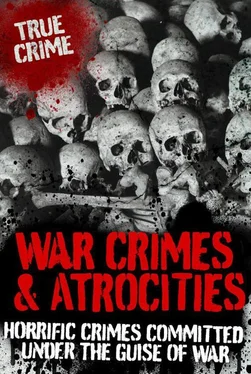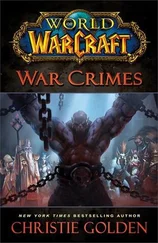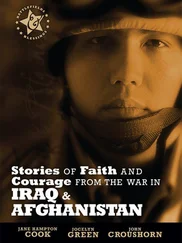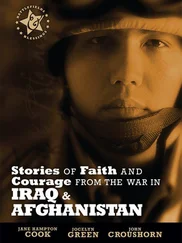An open anti-Semite, Seyss-Inquart saw to it that after the Dutch surrender all those of Jewish origin were immediately removed from the government, media, civil service and other positions of power in the country. Many successful Jewish business people were forced into poverty as a result of taxation and other laws. Jews were required to register as such, including many Jews who had fled to Holland to avoid the Nazis in Germany. In total, 159,806 people registered, including many who were only partially Jewish.
THE YELLOW STAR
Initially, there was some opposition to this openly anti-Semitic regime. In February 1941, a strike was mounted by Dutch workers to protest against the arrest and deportation of several hundred young Jewish people who had been sent to forced ‘labour camps’ as the concentration camps were euphemistically called. However, this protest only provoked further harsh measures on the part of the Nazis. With amazing speed, the Jews’ power and influence was eroded, until many were living in ghettoes in reduced circumstances, unable to work and to move around the country. However, it had not yet become clear just how far-reaching the new regime’s persecution of the Jews was going to be.
In a chilling development, a new law was passed on 29 April, 1942, requiring all Jews to wear a large yellow star on the left breast of their clothing. Anyone who did not comply with this could be fined on the spot or deported to a forced labour camp. From this time on, the SS police conducted raids on the ghettoes of Amsterdam, arresting Jews and sending them off to the concentration camps. Summons were also issued to Jews who had registered, telling them that they must report and leave immediately for Nazi ‘forced labour’ camps. Confused Jewish citizens turned to the Jewish Council, who represented their interests. The Council advised them to go, thinking that it might be able to oversee the process if it cooperated with the Nazis.
MASS DEPORTATIONS
Faced with this dilemma, many Jews chose to obey. There were unpleasant rumours about the ‘forced labour’ camps, but these were thought to be untrue (such rumours had persisted in World War I and had been found to be groundless afterwards). There were other Jewish families, such as that of Anne Frank, whose diary is an extremely moving account of the period, who decided to go into hiding. In all, about 25,000 to 30,000 Jews went into hiding, helped by the Dutch resistance movement. Two-thirds of those who did survived, though sadly not Anne and her family.
In the summer of 1942, the mass deportations of Dutch Jews began. Thousands upon thousands of innocent victims boarded trains to the Nazi concentration camps of Buchenwald, Mauthausen, Auschwitz, Sobibor and elsewhere, never to return. There, men, women and children, were gassed to death, starved, beaten and abused, in the largest genocide in modern history. By the end of the war, over 75 per cent of the Jewish population of the Netherlands was dead.
In hindsight, it seems extraordinary that so many Jewish families went meekly and obediently to their deaths in the concentration camps. There have been many explanations advanced for this, but it seems that, in many cases, people genuinely did not believe that the Nazis could be conducting a mass genocide programme on such a scale. Whatever the truth, the murder of so many thousands of Dutch Jews stands as one of the greatest crimes in the whole of human history.
REPRISALS
The Nazis did not restrict their brutality and sadism only to the Jewish population. In many cases, they wreaked their vengeance on the population at large, especially towards the end of the war when they realized that they were about to face defeat as the Allies invaded Europe. During this period, anyone suspected of harbouring or helping underground resistance fighters met with the harshest of punishments.
PUTTEN ATROCITY
At the village of Putten, on the night of 30 September, 1944, members of the Dutch underground resistance movement ambushed several German soldiers. Three escaped and one remained prisoner. This soldier, Lieutenant Eggert, was eventually released after the Nazis threatened reprisals against the villagers. However, even when he was set free, General Helmuth von Wuhlisch of the SS went ahead with the reprisals anyway, rounding up 598 men from the village and ordering them to be sent to concentration camps in Germany. Of these, only 49 survived the war and returned.
DE WOESTE HOEVE
Another atrocity occurred on the night of 6 March, 1945, when a German general, Hans Albin Rauter, was ambushed by Dutch underground resistance fighters. Ironically, the fighters had intended to ambush a German lorry, but struck the general’s BMW instead. Both the driver of the vehicle and another soldier were killed. Rauter sustained serious injuries and was taken to hospital near Apeldoorn, where he was given a number of blood transfusions.
Rauter recovered, but the Nazis were so incensed by this attack that they ordered immediate reprisals. Under the command of SS Brigadeführer Dr Eberhard Schongarth, 116 local men were arrested and taken to the scene of the crime, where they were all shot dead. Their bodies were buried nearby, in a mass grave at Heidehof cemetery, Ugchelen. Not only this, but all over the country, prisoners of the Gestapo were taken out and shot: in total, 147 more men lost their lives. Evidently, as the Allies invaded Europe, the Nazis were in a mood of desperation at losing the war, and reacted with appalling brutality.
After the Allied victory, General Rauter was arrested by British military police while in hospital at Eutin. He was then tried by a Dutch court in The Hague, and was sentenced to death. After a period of imprisonment, he was finally executed by a firing squad near Scheveningen Prison on 25 March, 1949. His colleague Schöngarth was also tried, this time by the British, and was later hanged.
TEXEL MASSACRE
The island of Texel lies off the coast of Holland. It was here that a mutiny of Soviet soldiers against their German masters took place in April 1945. Eight hundred Red Army soldiers, all from Georgia, had been taken prisoner and had volunteered to join the German army. As it turned out, however, this was just a ploy, and unbeknown to the German officers, the Soviet soldiers were plotting their revenge. One night in April, they struck: led by Lieutenant Shalva Loladze, they crept into the Germans’ sleeping quarters and murdered over 200 of the Nazi soldiers in their beds. When news of the massacre reached the mainland, the Germans responded by sending in soldiers to hunt the rebels down. Those who were caught were tied together in groups of four or five and blown up with hand grenades. In this way, over 400 Soviet soldiers perished; a further 100 or more local people also died in the fighting. Today, their remains are buried at the Georgian war cemetery on the island.
GERMANY 1938–45
The Nazi regime in Germany under Adolf Hitler is thought to have been responsible for the deaths around 11 million people, including 6 million Jews. The Holocaust, as it has become known, in which the Nazis carried out their plan of genocide with ruthless efficiency, was the greatest war crime of the 20th century, and possibly of all time. What differentiated it from other instances of persecution and attempted genocide was the sheer scale of the programme. The Nazis used newly developed technology to commit mass murder on a much larger scale than had hitherto been possible. During World War II, Germany underwent an industrial revolution – no longer manufacturing goods, but effecting the mass production of death and destruction.
THE ‘FINAL SOLUTION’
Perhaps the most disturbing aspect of the Holocaust, besides the sheer numbers of people killed, is the way in which the murders took place. They were organized efficiently and systematically, with the tacit or active consent of ordinary German people, who were persuaded that the Nazis’ aim to ‘cleanse’ the nation of racial impurity was a civilized goal, rather than a descent into barbarity. Not only were Jews considered undesirable: Poles, Serbs, Hungarians and other nationalities were persecuted, as were Roma, or gypsy, people, homosexuals, people from minority religious sects such as Jehovah’s witnesses, people with physical and mental disabilities, and others. Although the Nazi reign of terror meant that ordinary members of the public were often afraid to disobey orders, and acted out of fear, there is no doubt that many also used the opportunity to inflict violence on their fellow human beings.
Читать дальше












